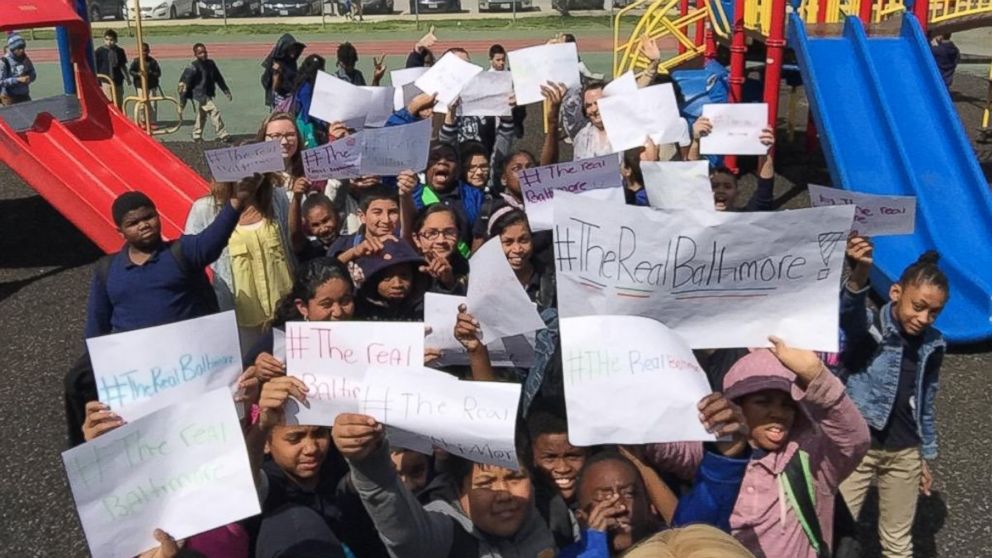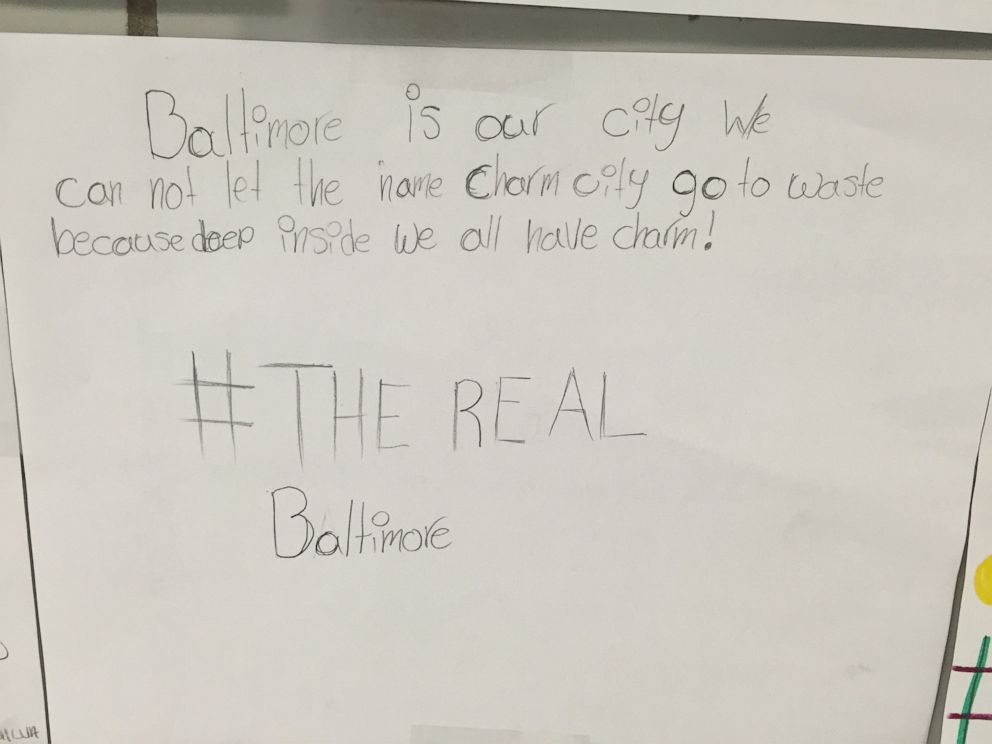The Real Baltimore: What Lakeland Elementary School Students Had to Say About the Riots
Schools reopened across Baltimore today after tensions eased.

— -- Schools reopened across Baltimore today after tensions eased around the city following the first night of a 10 p.m. curfew.
But for students at Lakeland Elementary/Middle School, class didn't resume as usual.
Ashley Smith, a teacher at the school, chose to have her class write down their reactions in regard to the chaos surrounding their city amid the riots following the funeral of Freddie Gray, a man who died after an unexplained spinal injury suffered in police custody.
“I knew the students would be coming into class today with a lot of questions about what had taken place,” Smith told ABC News. “They had heard a lot on TV, from their parents, from their friends. I wanted to provide them with the space to reflect on what they knew.”
One student wrote, “I think people should just protest instead of having a bad riot. Also, I think the police should give people a chance to talk before they hurt or kill people. ... We need answers before it gets any worse.”
And that’s coming from a fourth grader.
For this assignment, Smith started by having her students "look up the words riot and protest and discuss what they meant. They were given free space to write and tell us what they were thinking.”
“It was clear to them, immediately, that the two words [riot and protest] were not synonymous,” Smith said.
Smith really wanted to encourage open dialogue between her students in a healthy and conventional way, and was impressed with her students’ ability to write and speak about the events -- both peaceful and violent.
A fifth grade class at the same school also made their voices heard when their teacher, Megan Pingel, posted a photo of them on Twitter holding signs that say “#TheRealBaltimore” this afternoon.
Upset by the grim picture being painted of the city, Pingel had her students write down what they wanted the world to know about “the real Baltimore.”
“My kids didn't want the world to think that this is how all students are and act in Baltimore,” Pingel told ABC News. “They wanted the world to know, ‘Hey we’re good kids! We have a lot going for us and we will be the change this city needs.’”

Lakeland, a public school located in southwest Baltimore, has a large percentage of African American students. In addition, 84 percent of the total students identify as low income based on eligibility for free or reduced-price school meals.



